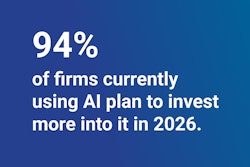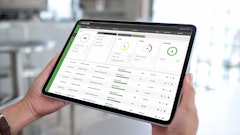
Every construction and engineering project, regardless of its scale, hinges on a single critical element: the schedule. It’s more than a timeline; it’s the multidimensional blueprint that guides every phase, from initial concept to final closeout. The success of the entire project rests on this foundational document. Given the escalating complexity of today's projects, an optimal schedule demands more than technical skill – it requires complete inclusivity and seamless collaboration, aligning every person, process and tool. For a project to thrive, the entire team needs immediate access to accurate, up-to-date details before they provide input or report on progress.
So, how do project leaders ensure this level of collaboration and coordination? The most effective approach strategically unites two powerful methodologies: Critical Path Method (CPM) scheduling and granular task management. This isn't just about combining data; it's about forging a single, connected and holistic schedule — the bedrock for keeping complex projects on budget and on time.
CPM: The Enduring Power of Project Scheduling
For over 70 years, CPM has been the gold standard in schedule management, and for compelling reasons. CPM offers a robust framework, enabling scheduling teams to develop comprehensive plans, accurately reflect project dynamics and precisely forecast completion dates.
As computer software and hardware have advanced, CPM has evolved, solidifying scheduling as a critical business function demanding dedicated professionals. Pioneered by corporate giants, CPM uses a project network diagram to map the intricate relationships between activities that directly influence the project's completion date. This approach is exceptionally well-suited for any project with a network of interdependent activities, which explains its widespread adoption in construction and engineering. As the contractual schedule, these detailed networks provide invaluable benefits:
- They outline a clear and logical sequence of work throughout the project lifecycle.
- They ensure every team member — in the office or the field — is on the same page regarding project objectives and timelines.
- They enable the rapid calculation of activity durations and dependencies within milliseconds.
- They empower project managers to forecast work completion with remarkable accuracy, facilitating proactive decision-making.
While CPM has successfully guided countless projects independently, a common challenge arises when field teams create their own short-interval networks. These localized plans, often disconnected from the main CPM schedule, represent the individual tasks executed directly in the field. This disconnect between the master plan and daily work is a frequent source of inefficiency and unforeseen delays.
Task Management: Driving Daily Production
Any communication breakdown or misaligned task can profoundly impact project delivery and overall cost. This underscores the need for effective task management — a system that both field and office teams can easily use and respond to. Like CPM, task management is a long-established discipline focused on continuously improving quality and efficiency.
Its core purpose is to maximize material and labor use while systematically eliminating waste. By applying task management concepts, organizations can focus intently on the task level. This granular view highlights the precise coordination and communication required to meet commitments and ensure smooth, predictable progress.
One Schedule: Unifying All Efforts
Regardless of their location, all team members work toward a single goal: the successful, on-time and on-budget completion of the project. However, different teams have different scheduling and resource management needs to achieve this.
A truly effective schedule acknowledges these diverse requirements and provides a single, unified plan where every need is met. This begins with a coordinated, cross-functional planning process. In essence, it means bringing the activities and critical information from both schedulers and field teams into one unified view. This integrated perspective fosters shared understanding and collective ownership.
To achieve this, project teams must leverage a combined approach. Start with a simplified CPM that outlines the major scopes of work. Then, break down these larger activities into the shorter-interval tasks that field teams use to manage their daily production. This hierarchy ensures the master plan translates into actionable steps for those executing the work.
Putting Theory into Practice
The best CPM schedules recognize that a larger contract schedule isn’t automatically a better one. When too much granular detail is embedded directly in the contract schedule layer, it can become unwieldy and confusing. Instead, a robust CPM should focus on the major "lanes" of the project, defining the overall scope and how the schedule should be logically broken down. Great schedules also include more voices by extending the planning community across the entire project lifecycle.
With the project's scope and key milestones outlined, the next step is to detail production. Schedulers should provide field teams with an intuitive experience that empowers them to plan using familiar tasks within shorter production windows. Here, the emphasis should be on frequent collaboration and ensuring the predictability of the workflow.
Finally, it’s imperative to determine if the field production plan aligns with the contract schedule. The most effective way to do this is to structurally connect these plans — and the teams managing them — within a unified technology environment. This platform brings all relevant data and processes together, creating a single source of truth. This unification of people, processes and information is the engine for achieving and maintaining alignment from start to finish. Embrace this integrated approach — it’s the blueprint for your next successful project.




















